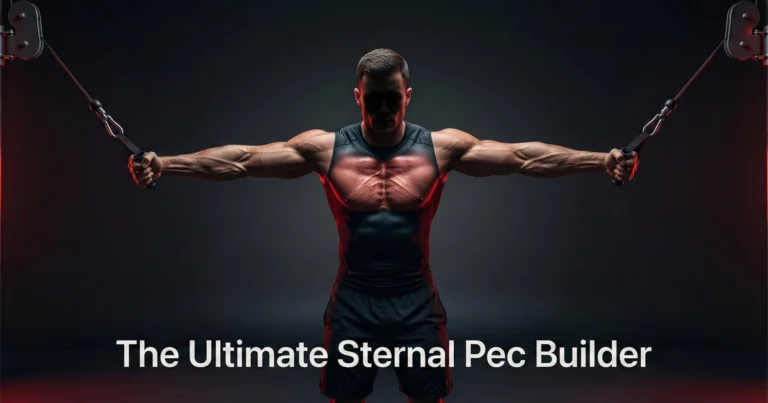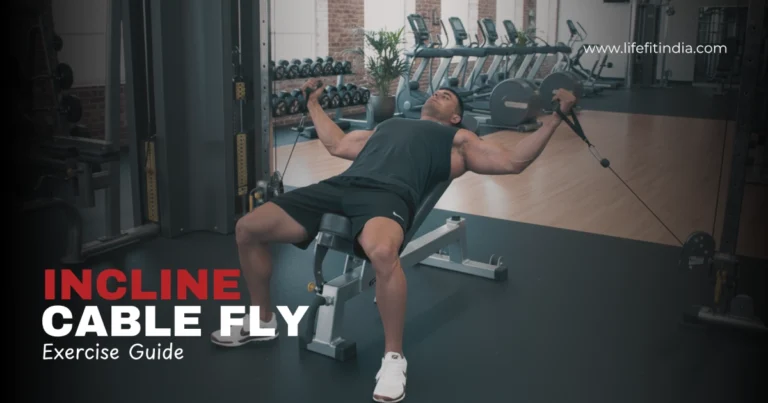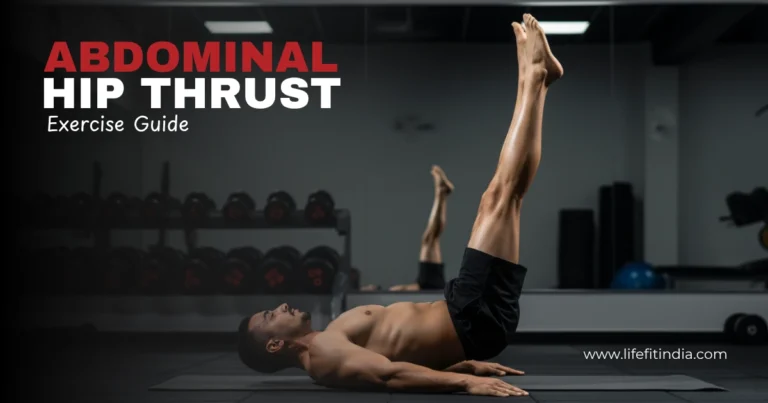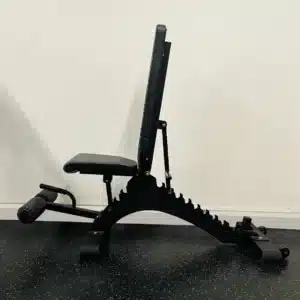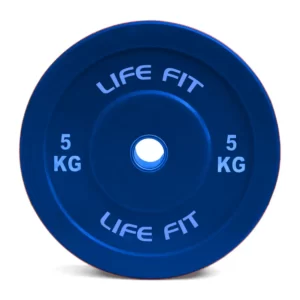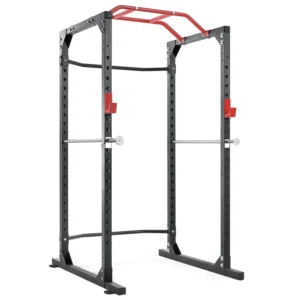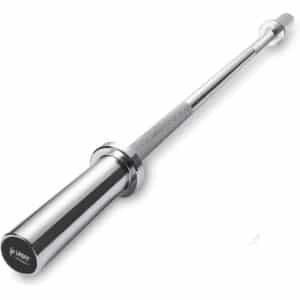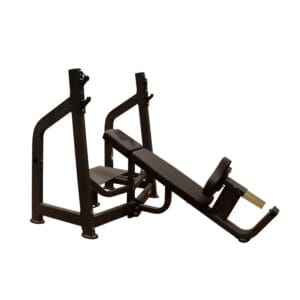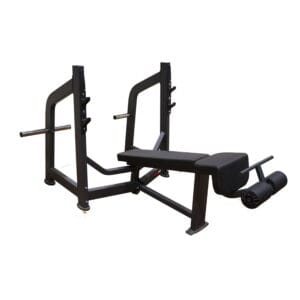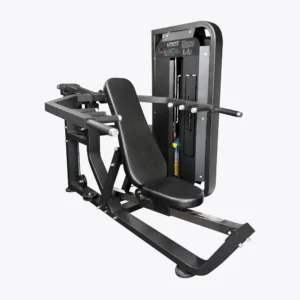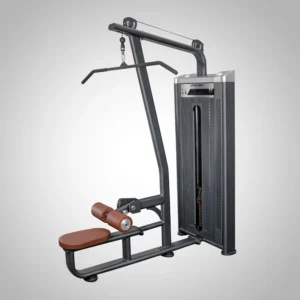Barbell Bench Press Exercise Guide (Form, Safety & Progress)

The barbell bench press stands as a fundamental exercise in strength training, celebrated for its power in building upper body strength and muscle mass. If you want to develop your chest, shoulders, and triceps, mastering this lift is key. This comprehensive guide covers everything you need to know, from the essential anatomy and perfect setup to flawless execution, safety protocols, common mistakes, effective variations, basic programming integration, and troubleshooting advice. Whether you are a beginner just starting your strength training journey or an intermediate lifter looking to refine your technique, this guide provides accessible yet in-depth information.
Understanding the Bench Press: Muscles Worked & Benefits

- Anatomy Overview: The bench press primarily targets the Pectoralis Major (the main chest muscle, including both upper and lower portions), the Anterior Deltoids (front part of your shoulders), and the Triceps Brachii (back of your upper arms). Understanding these muscles helps you focus during the lift.
- Key Benefits: Performing the barbell bench press correctly offers numerous advantages. It significantly increases upper body strength, promotes muscle growth (hypertrophy) in the chest, shoulders, and triceps, can contribute to improved bone density, and enhances functional strength applicable to various activities. Incorporating it into your workout routines can yield substantial physical benefits.
Essential Equipment & Safety First: Setting the Stage
Proper equipment and a focus on safety are crucial before you even touch the bar.
- Required Gear: You will need a sturdy Weight Bench, a standard or Olympic Barbell, sufficient Weight Plates (like Rubber Bumper Plates or Triangle Olympic Plates), and ideally, a Power Rack or Squat Rack with safety arms/pins, or a reliable spotter. Using collars or clips to secure the plates is also highly recommended. For guidance on selecting plates, see our guide to choosing gym weight plates.
- Spotter vs. Safeties: A spotter is essential when lifting heavy weights, especially near your limit. If training alone, use a power rack or squat stand with safety bars set correctly just below your chest level when lying on the bench. This ensures that if you fail a rep, the bar can be safely caught. Learn more about setting up your home gym safely.
- Collars/Clips: Always use collars or clips to prevent plates from sliding off during the lift, which can cause dangerous imbalances. The only potential exception is for very experienced lifters training alone without safety bars, who might forgo clips to intentionally dump plates if needed, but this is not advised for most people.
- Warm-Up Protocol: Never jump straight into heavy benching. Warming up prepares your muscles and joints. Perform dynamic stretches focusing on the shoulders, chest, and back, followed by light activation exercises and a few lighter sets of the bench press itself. Consider using a Foam Roller for mobility work.
The Foundation: Perfect Barbell Bench Press Setup (5 Points of Contact)
A solid setup is the bedrock of a strong and safe bench press.
Bench Selection & Positioning
Choose a stable bench, like a dedicated Flat Bench or a quality Adjustable Gym Bench. Lie down on the bench so your eyes are roughly aligned directly under the barbell when it is racked. Our guide can help you choose the perfect adjustable gym bench.
Mastering the 5 Points of Contact
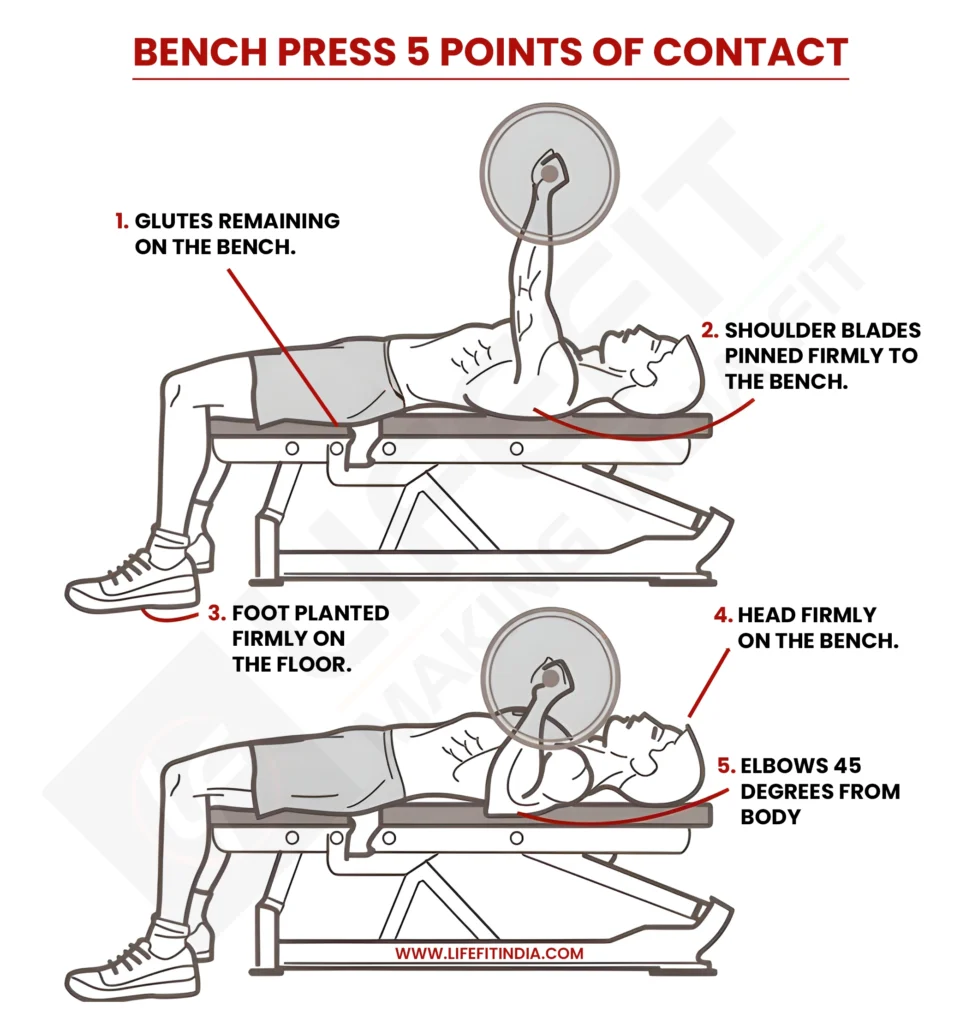
This concept is critical for stability. Throughout the entire lift, maintain contact with:
- Your Head firmly on the bench.
- Your Upper Back/Shoulder Blades retracted and pressed hard into the bench.
- Your Glutes remaining on the bench.
- Your Left Foot planted firmly on the floor.
- Your Right Foot planted firmly on the floor.
Maintaining these five points ensures a stable base.
Foot Placement and Leg Drive
Your feet provide the connection to the ground and initiate stability.
- Ground Connection: Your feet must be firmly planted on the floor throughout the lift.
- Stance Options: A Point of Discussion: You will see different recommendations here. Some prefer feet flat on the floor, others pull feet back with heels raised. Both can work. A shoulder-width stance is a good starting point. Experiment to find what feels most stable for you and allows you to generate force without your glutes lifting. The best choice depends on your body mechanics and comfort.
- Activating Leg Drive: Think about “pushing the floor away” or driving your feet forward into the floor. This leg drive creates tension and stability through your entire body, helping transfer force into the bar. It is not meant to lift your hips off the bench.
Creating Upper Body Stability: Arch and Shoulder Blades
Locking in your upper back is essential for shoulder health and lifting power.
- Scapular Retraction: Actively pinch your shoulder blades together and pull them down towards your hips, as if trying to tuck them into your back pockets. This creates a solid platform on the bench, protects your shoulder joints, and can slightly reduce the range of motion.
- The Back Arch: Understanding the Nuance: There is often debate about the barbell bench press arch. For general fitness and hypertrophy goals, focus on creating a slight, natural arch in your upper/mid back (thoracic spine) by keeping your chest pushed up towards the bar and shoulder blades retracted. Your glutes must remain firmly on the bench. Avoid an excessively flat back. An extreme arch, particularly involving the lower back (lumbar spine), is a technique primarily used by competitive powerlifters to minimize range of motion and lift maximal weight. This is not necessary or recommended for most individuals focusing on general strength or muscle building.
Grip Strategy: Width, Placement, and Tension
How you grip the barbell significantly impacts the lift.
- Finding Optimal Width: It Depends: There is no single “best” width. Start with hands slightly wider than shoulder-width. Many barbells have rings; using these as guides (e.g., pinky or ring finger on rings) helps consistency. Study shows wider grips tend to involve the chest more, while narrower grips emphasize the triceps. However, individual limb length and shoulder comfort are crucial. Experiment to find a width that feels strong, comfortable, allows proper elbow tuck, and lets you feel the target muscles working. Aiming for vertical forearms at the bottom (viewed from the side) is a useful guideline.
- Secure Grip Technique: Always use a full grip, wrapping your thumbs securely around the bar. Position the bar lower in your palm, closer to the heel of your hand, which helps keep your wrists straight. Squeeze the bar hard, imagining you are trying to bend it; this creates tension throughout your arms and upper back. Avoid the thumbless or “suicide” grip, as it significantly increases the risk of the bar slipping. Ensure your wrists stay straight and strong, not bent backward.
Executing the Perfect Barbell Bench Press: Step-by-Step Video & Guide
1st Step: Unracking the Bar
- Brace: Before unracking, take a deep breath into your diaphragm and brace your core muscles tightly.
- Lift-off: Use straight arms to lift the bar just clear of the rack hooks. Bring the bar horizontally until it is stable directly over your upper chest or shoulder joints. Maintain your shoulder blade retraction and full body tightness. If possible, have a spotter assist with the lift-off to conserve energy.
2nd Step: The Descent (Lowering the Bar)
- Control is Key: Lower the bar deliberately and under full control. Do not simply let it drop. This eccentric phase builds strength and stability.
- Elbow Position: Actively tuck your elbows towards your torso as you lower the bar. Aim for an angle roughly 45 to 75 degrees between your upper arms and your body. Think of creating an “arrow” shape with your arms and torso, not a “T” shape. This protects your shoulder joints. Avoid letting your elbows flare out wide.
- Bar Path (Descent): Guide the bar down towards your mid to lower chest area, typically around the sternum. The path will naturally be slightly diagonal, moving down and slightly forward from the starting position. Your forearms should ideally be vertical when viewed from the side at the bottom position.
- Breathing: Take a deep inhale during the descent phase. Hold this breath briefly at the bottom to maintain core tightness and stability.
3rd Step: The Touchdown (Chest Contact)
- Chest Contact: Full Range for Most: Allow the bar to make light contact with your chest or sternum. Aiming for a full range of motion is generally best for muscle development and strength across the entire movement.
- No Bouncing: It is crucial to avoid bouncing the bar off your chest. Bouncing uses momentum instead of muscle and significantly increases the risk of injury.
- Optional Pause: Consider incorporating a brief, deliberate pause (1 second) once the bar touches your chest. Paused reps eliminate momentum, build strength from the most difficult position, and reinforce control.
4th Step: The Ascent (Pressing the Bar)
- Initiate the Drive: Start the upward press by driving hard with your legs into the floor (“push the floor away”) while keeping your glutes down.
- Press Powerfully: Press the bar upwards explosively but remain in control. Focus on the feeling of pushing yourself away from the bar, driving your body into the bench.
- Bar Path (Ascent): The bar path on the way up should move up and slightly back, returning to the starting position over your shoulder joints. It is not a perfectly straight vertical line.
- Elbows & Shoulders: Keep your elbows slightly tucked as you initiate the press, allowing them to track naturally as the bar moves up. Maintain the “chest up” position and keep your shoulder blades squeezed together and down throughout the press. Do not let your shoulders roll forward at the top of the movement.
- Breathing: Exhale forcefully as you push through the most difficult part of the lift (the sticking point).
5th Step: Lockout & Racking
- Lockout: Fully extend your arms at the top of the movement, stabilizing the bar over your shoulder joints. Avoid aggressively snapping or hyperextending your elbows.
- Re-Rack Safely: Once you have completed your final repetition, move the bar horizontally back over the rack hooks and lower it carefully and securely onto the supports.
Avoiding Pitfalls: Common Barbell Bench Press Mistakes & Fixes
- Flaring Elbows: Elbows point straight out to the sides (T-shape).
- Fix: Focus intensely on the “tuck your elbows” cue (aim for 45-75 degrees). Practice the movement pattern with lighter weight. Consider a slightly narrower grip.
- Bouncing Bar Off Chest: Using momentum from the chest to lift the weight.
- Fix: Slow down the descent. Focus on controlled lowering. Implement a deliberate pause on the chest for practice.
- Butt Lifting Off Bench: Hips rise during the press, losing a key point of contact.
- Fix: Check your foot placement and ensure a stable base. Focus on driving back or down with your legs, not up. Ensure the weight is not too heavy. Actively squeeze your glutes to keep them anchored.
- Incorrect Bar Path: Lowering too high on the chest or pressing straight up instead of up and back.
- Fix: Film your lifts from the side to analyze the path. Reinforce cues: touch lower chest/sternum, press up and back towards the rack.
- Bent/Hyperextended Wrists: Wrists bend backward under the load.
- Fix: Adjust your grip ensuring the bar sits lower in the palm. Cue “point your knuckles to the ceiling”. Consider using wrist wraps for extra support if needed, especially with heavier weights.
- Losing Shoulder Retraction/Arch During Set: Shoulder blades come apart, or the upper back flattens mid-set.
- Fix: Re-establish your tight setup before every single set. Ensure the bench surface allows good grip. Focus on maintaining tension throughout all reps.
- Performing Half Reps: Not lowering the bar all the way to the chest.
- Fix: Prioritize full range of motion for optimal development. If you cannot touch your chest with good form, the weight is likely too heavy; reduce it.
Troubleshooting Common Pains (And When to Seek Professional Help)
While proper form minimizes risk, occasional aches can occur. This section offers starting points, but persistent pain needs professional evaluation.
- Shoulder Pain: Often linked to elbow flare, incorrect grip width, losing shoulder retraction, or underlying impingement issues.
- Solutions: Double-check your form meticulously. Experiment with slightly different grip widths or elbow tuck angles. Ensure a thorough warm-up. Temporarily switching to variations like the Incline Bench Press, decline press, or using Dumbbells (e.g., Flat Bench Dumbbell Press) might help.
- Disclaimer: If you experience sharp, persistent, or worsening shoulder pain, stop benching and consult a qualified healthcare professional or physical therapist.
- Elbow Pain: Can result from tendonitis, grip issues, or simply too much volume/intensity.
- Solutions: Check your elbow tracking during the lift. Ensure your grip is not causing undue strain. Manage your training volume. Incorporating exercises like dips (perhaps using an Assist Dip Chin machine) or triceps pushdowns might help build elbow resilience.
- Wrist Pain: Usually related to wrists bending backward under the load.
- Solutions: Correct your grip placement (bar lower in palm). Consider using wrist wraps for added support. Strengthening your grip and forearms can also help.
- Lower Back Strain: Can occur from excessive lumbar arching or an unstable setup.
- Solutions: Focus the arch higher up in your thoracic spine. Ensure your glutes stay firmly on the bench. Check your foot position for stability and ensure leg drive is controlled. Using a Deadlift Platform for stability exercises might indirectly help core strength.
- Hitting a Plateau: If progress stalls despite good form, consider advanced strategies like varying rep ranges, incorporating strategic pauses or tempo changes, targeted assistance work for weak points, or planned deloads.
Bench Press Variations
Once you have mastered the basic barbell bench press, variations can target muscles differently or help break plateaus.
- Incline Bench Press: Performed on an Incline Bench, this variation places more emphasis on the upper chest and shoulders.
- Decline Bench Press: Done on a Decline Bench, this targets the lower chest fibres and often allows lifters to handle slightly more weight with potentially less shoulder strain.
- Close-Grip Bench Press: Uses a narrower grip (shoulder-width or slightly inside) to place greater emphasis on the triceps.
- Wide-Grip Bench Press: Uses a grip wider than your standard press. Emphasizes the outer chest fibres more and shortens the range of motion. Use caution as very wide grips can increase shoulder stress for some.
- Dumbbell Bench Press: Using Dumbbells requires more stabilization and often allows for a greater range of motion and more natural shoulder movement. Try the Dumbbell Bench Press or Exercise Ball Dumbbell Press. Explore different dumbbell types for your training.
- Paused Bench Press: Involves pausing the bar on the chest for 1-3 seconds before pressing up. Excellent for building strength out of the bottom position and improving control.
Programming the Barbell Bench Press for Progress: Beginner & Intermediate Basics
Just doing the exercise is not enough; you need a plan for progress.
- Training Frequency: For most beginners and intermediates, bench pressing 1 to 3 times per week allows for adequate recovery and progress, depending on your overall workout routine.
- Sets and Reps (Tailored to Goals): Your sets and reps can be adjusted based on your primary focus:
- For Strength: Prioritize lower reps with heavier weight. Aim for 3-5 sets of 3-6 repetitions. Focus on maximal force production.
- For Hypertrophy (Muscle Growth): Moderate reps with challenging weight work well. Try 3-4 sets of 8-12 repetitions. Focus on controlled movement and feeling the muscle work.
- For Muscular Endurance: Higher reps with lighter weight are key. Use 2-3 sets of 15+ repetitions.
- Progressive Overload Explained: This is the fundamental principle for getting stronger or building muscle over time. It means gradually increasing the demands placed on your muscles. You can do this by adding a small amount of weight (e.g., 1-2.5 kg) to the bar when you can complete all your target reps with good form, doing more reps with the same weight, or doing more sets. A simple linear progression (adding weight consistently) works well initially but will eventually require more advanced planning. Consider exploring various types of exercises to complement your training.
- Importance of Assistance Work: Exercises that strengthen the supporting muscles (shoulders, triceps, back) will directly help improve your bench press. Key assistance exercises include Overhead Press (using barbells or a Shoulder Press Machine), Rows (Bent-over Rows, Cable Rows using a Seated Row Machine, or a Lat Pull Down/Seated Rowing combo), Dips (using a Dip Station or Assist Dip Chin machine), and Triceps Extensions or Pushdowns (using dumbbells or cables from a Functional Trainer). Balancing pressing movements with pulling movements is important for shoulder health and overall muscular balance.
Barbell Bench Press Frequently Asked Questions (FAQ)
Is a big arch necessary or safe?
As discussed earlier, a slight thoracic (upper/mid-back) arch for stability is good and safe for most people. An extreme lumbar (lower back) arch is a specific powerlifting technique and generally not needed or advised for general fitness. Always keep your glutes on the bench.
Do I absolutely have to touch the bar to my chest?
Generally, yes, for full range of motion and optimal muscle development. Exceptions exist for injury rehabilitation or specific training goals (like board presses), but mastering the full range of motion first is usually best.
What is the single best grip width?
There is no single best width; it depends on your anatomy, goals, and comfort. Start moderate, adjust based on feel, and use the ‘vertical forearms at the bottom’ guideline. What works best for a powerlifter might differ from a bodybuilder or someone with shoulder issues.
Should my feet be flat or can I be on my toes/heels up?
Experiment to find what provides your most stable base and allows effective leg drive without lifting your butt. Both methods are used successfully.
My bench press is stuck. How do I increase it?
Ensure perfect form first. Be consistent with training. Apply progressive overload intelligently. Ensure adequate calorie/protein intake and sleep. Incorporate variations and targeted assistance exercises. Consider manipulating training variables like frequency, intensity, volume, or rest periods. Check out our tips on how to increase stamina for overall fitness improvement.
Conclusion
Mastering the barbell bench press is a rewarding process that requires attention to detail and consistency. Remember the key pillars: establish a rock-solid setup with 5 points of contact, execute each rep with proper form (especially elbow tuck and bar path), always prioritize safety (using spotters or safeties), and apply consistent effort over time. Building a strong bench press takes time and dedicated practice, so be patient and persistent with your training.
Explore our range of Strength Machines to support your goals.
Do you have questions about the bench press or your training? Ask them in the comments below.
For a quick reference, download our free Bench Press Setup Checklist PDF (Download).
Ready to equip your home gym? Check out our selection of Benches & Racks and Barbells & Plates.
About Arpan Singh
Arpan Singh is the founder of LIFE FIT and a certified expert in Kinesiology, Anatomy, Biomechanics, Sports Nutrition, and Personal Training, with additional CPR & BLS certification from Apollo. With over 15 years of experience, he writes science-backed fitness content to help individuals train safely and effectively.
View all posts by Arpan SinghRelated posts
Best Equipment for Chest Workout
-
 Multi Adjustable Gym Bench | Bench Press for Home Gym Rated 4.75 out of 5
Multi Adjustable Gym Bench | Bench Press for Home Gym Rated 4.75 out of 5₹34,999Original price was: ₹34,999.₹18,499Current price is: ₹18,499. -
 High-Quality Hex Dumbbells for Strength Training Rated 4.75 out of 5₹899 – ₹4,499Price range: ₹899 through ₹4,499
High-Quality Hex Dumbbells for Strength Training Rated 4.75 out of 5₹899 – ₹4,499Price range: ₹899 through ₹4,499 -
 Rubber Bumper Plates - Pair Rated 4.80 out of 5₹1,799 – ₹8,999Price range: ₹1,799 through ₹8,999
Rubber Bumper Plates - Pair Rated 4.80 out of 5₹1,799 – ₹8,999Price range: ₹1,799 through ₹8,999 -
 LF-R100 Power Rack Rated 5.00 out of 5
LF-R100 Power Rack Rated 5.00 out of 5₹39,999Original price was: ₹39,999.₹27,999Current price is: ₹27,999. -
 Elite Ironworks Olympic Barbell Rated 5.00 out of 5₹2,699 – ₹4,999Price range: ₹2,699 through ₹4,999
Elite Ironworks Olympic Barbell Rated 5.00 out of 5₹2,699 – ₹4,999Price range: ₹2,699 through ₹4,999 -
 Hammer Strength Olympic Flat Bench
Hammer Strength Olympic Flat Bench
₹57,199Original price was: ₹57,199.₹39,999Current price is: ₹39,999. -
 Olympic Incline Bench
Olympic Incline Bench
₹57,199Original price was: ₹57,199.₹39,999Current price is: ₹39,999. -
 Olympic Decline Weight Bench
Olympic Decline Weight Bench
₹57,199Original price was: ₹57,199.₹39,999Current price is: ₹39,999. -
 Assist Dip Chin | LIFE FIT
Assist Dip Chin | LIFE FIT
₹116,665Original price was: ₹116,665.₹69,999Current price is: ₹69,999. -
 Multi Press Machine | Impact Series
Multi Press Machine | Impact Series
₹116,665Original price was: ₹116,665.₹69,999Current price is: ₹69,999. -
 LIFE FIT Pro Lat Pull Down Machine
LIFE FIT Pro Lat Pull Down Machine
₹114,285Original price was: ₹114,285.₹79,999Current price is: ₹79,999.


